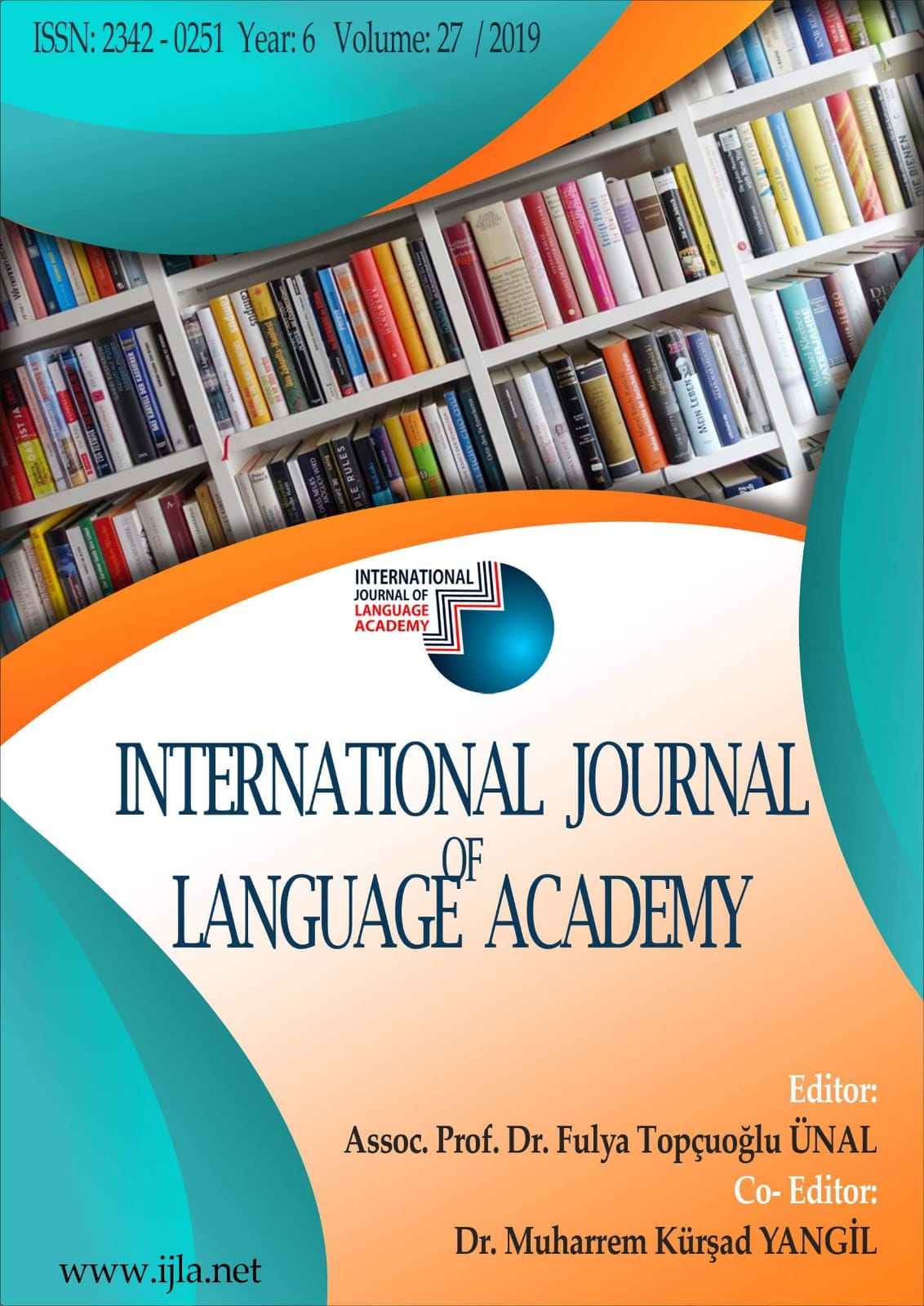Author :
Abstract
Latince aslından dilimize ilk kez çevrilen Tristia III.3, Romalı elegeia ozanı Ovidius’un sürgünde yazdığı en dokunaklı şiirlerden biridir. Ovidius’un Roma’daki karısına hitaben yazınsal mektup şeklinde yazdığı şiir, sürgünün zorlukları, yurt sevgisi, sevdiklerine duyulan özlem, ölüm, ölümsüzlük gibi pek çok izleği barındırmaktadır. Baştan sona pathos oluşturabilme amacı güden şiirde Ovidius, Roma’da sahip olduğu ama sürgünde yoksun olduğu şeyleri birbirleriyle zıtlık oluşturacak şekilde vurgulayarak okuyucuda uyandıracağı acıma duygusunu arttırmaya çalışır. İklimi ılıman, toprağı verimli İtalya gibi bir ülkeden ve her yanı sanat eserleriyle donatılmış, sık sık eğlence ve şölenlerin düzenlendiği Roma gibi bir kentten, iklimi sert, toprağı tarıma elverişsiz, ıssız ve uygarlaşmamış Tomis gibi bir kente sürgüne gönderilmek Ovidius için adeta ölüm demektir. Şiirin bir diğer dikkat çeken özelliği ise 73-76. dizeler arasında Ovidius’un kendisi için yazdığı mezar yazıtını içermesidir. Bu çalışmada şiir, hem konu hem de plan bakımından incelenmiştir. Ovidius’un şiiri yazarken örnek aldığı, kendisi tarafında yazılan Amores III.9 ve kendisinden önceki elegeia ozanları Tibullus (I.3) ve Propertius (II.13b) tarafından yazılan benzer konulu şiirler ile benzerlikleri de vurgulanmıştır. Çalışmanın sonunda ise okuyucuya kolaylık sağlamak için şiirin çevirisi bütün olarak verilmiştir.
Keywords
Abstract
Translated to our language for the first time Tristia III.3 is one of the most grieving poems which Ovidius wrote in exile. Written as a literal letter, the poem contains the themes such as difficulties of exile, love of country, missing of the beloved ones, death and immortality. In the poem which aims to make pathos from the first line to the last, Ovidius tries to increase the reader’s pain sensation, making using of contrasts of things which he has in Rome but doesn’t have in exile. For Ovidius it means death that he was banished from a country like as Italy whose climate is warm, land is fertile and from a city like as Rome whose every part is full of art objects and where often plays and banquets are held to a city like as Tomis whose climate is hard, land is infertile, deserted and uncivilized. Another important feature of the poem is that it has epitaph which Ovidius wrote for himself between 73-76 lines. In this study the poem was examined with regard to both the subject and the plan. Similarities between the poems about the same subject which were written before by himself (Amores III.9) and by other elegeiac poets, Tibullus (I.3) and Propertius (II.13b), also were emphasized. At the end of the poem whole translation of the poem was given to provide convenience fort the reader.
Keywords
- Civelek, A. (2007). “Roma Cenaze Törenleri ve Gömme Gelenekleri”. Arkeoloji ve Sanat Dergisi 124: 71-80
- Cohen, S.T. (2008). “Augustus, Julia and the development of exile ad insulam”. Classical Quarterly, 58: 206-217
- Dürüşken, Ç. (2010). Ovidius, Aşk Sanatı. İstanbul: Türkiye İş Bankası Kültür Yayınları.
- Ennius, Medeia Exul = Ennius. (2018). Fragmentary Republican Latin, Volume II: Ennius, Dramatic Fragments. Minor Works. (çev. S. M. Goldberg, G. Manuwald). Loeb Classical Library 537, Cambridge, MA: Harvard University Press
- Goold, G.P. (1983). “The Cause of Ovid’s Exile”. Illinois Classical Studies 8 (1): 94-107
- Green, P. (1982). “Carmen et Error: Carmen et Error: πρόφασις and αἰτία in the Matter of Ovid's Exile”. Classical Antiquity 1 (2): 202-220
- Huskey S. J. (2002). Ovid's Tristia I And III: An Intertextual Katabasis, University of Iowa, Yayımlanmamış Doktora Tezi
- Ingleheart, J. (2015).”Exegi Monumentum: Exile, Death, Immortality and Monumentality In Ovid, Tristia 3.3”. The Classical Quarterly, 65 (01): 286-300
- Keskin, L. (2010). Sürgün Sonrası Eserlerinde Ovidius’un Ruh Hali Ve İmparator Augustus İle Çatışması. Yayımlanmamış yüksek lisans tezi, İstanbul Üniversitesi
- Özaktürk M. (1999). Roma Yazının Sürgün Ozanları. Ankara: T.C.Kültür Bakanlığı.
- Öztürk R. (2014). “Ovidius’un Elegeia’larında Ağıt”, In Memoriam Filiz Öktem, Ankara Üniversitesi, s.247-258
- Propertius. (1990). Elegies. (Çev. G. P. Goold). Loeb Classical Library 18, Cambridge, MA: Harvard University Press
- Rosenmayer, P.A. (1997). “Ovid’s Heroides and Tristia: Voices from Exile.” Ramus 26: 29- 56.





